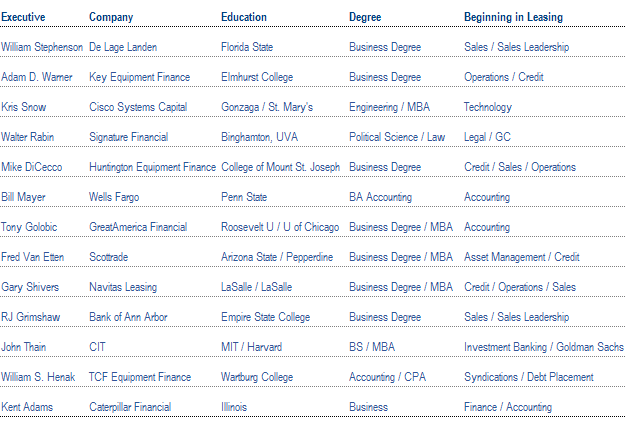
Climbing a ladder can be risky business. It is reported that 43% of all fatal falls happen from people climbing ladders. Successfully climbing the corporate ladder can be an equally difficult ascent to master, but once the ladder is scaled, the view can be glorious. A rarified few in the leasing and finance industry make it to the top. Ironically, less leaders in this industry make it to the top of the org chart each year than the number of climbers who successfully conquer Mt. Everest annually.
What is the secret to getting to the top? As an executive recruiter who often is included in confidential board room discussions regarding leadership, I have an inside view on this topic that may shed new light. A top CEO is valued and can create tremendous shareholder value and employee growth. The best leaders drive an organization to strong returns, which lead to excellent employee bonuses and incentives. The best leaders drive growth, innovation and change. They lead acquisitions, integrations and drive organic expansion and double digit CAGRs.
What is different about these leaders who became CEOs that propelled them to the top of the corporate ladder? Was it an Ivy League education? Career track? Was it who they knew or what they did? Was it individual skills sets? Could it be charisma and likeability? Was it leadership skills?
To look deeper into these questions, we will first look at the road traveled of current leaders who made it to the top. The road illuminates the path that others could follow.
Our analysis will begin with some reverse engineering of 13 CEOs to see what the data tells us. The CEOs we selected are from firms of different sizes and backings and have great responsibility, leading over $50 Billion of annual financing of all deal sizes and asset types.
Author's Note: Career information on the leaders profiled in this article was sourced from public information.
The Baker's Dozen of CEOs

Let’s start with education...
While an MIT degree and Harvard MBA was the route to the top for John Thain at CIT, is this the only route? Surprisingly no, top Ivy League educations were the exception, not the rule. A solid grounding at a mid-range, undergraduate university program was enough for many who made the list.
Six of the 13 leaders did go on to obtain advanced degrees, typically MBAs, CPAs or Law degrees, but six others had just business degrees. Two leaders in our study did not focus on business in their college days, with one engineering degree and one political science major. Conclusions? While education is clearly important and foundational, if you did not get into Harvard or Princeton, there is still hope. Education does not seem to limit the chances of successful ascent, but advanced studies could make a difference.